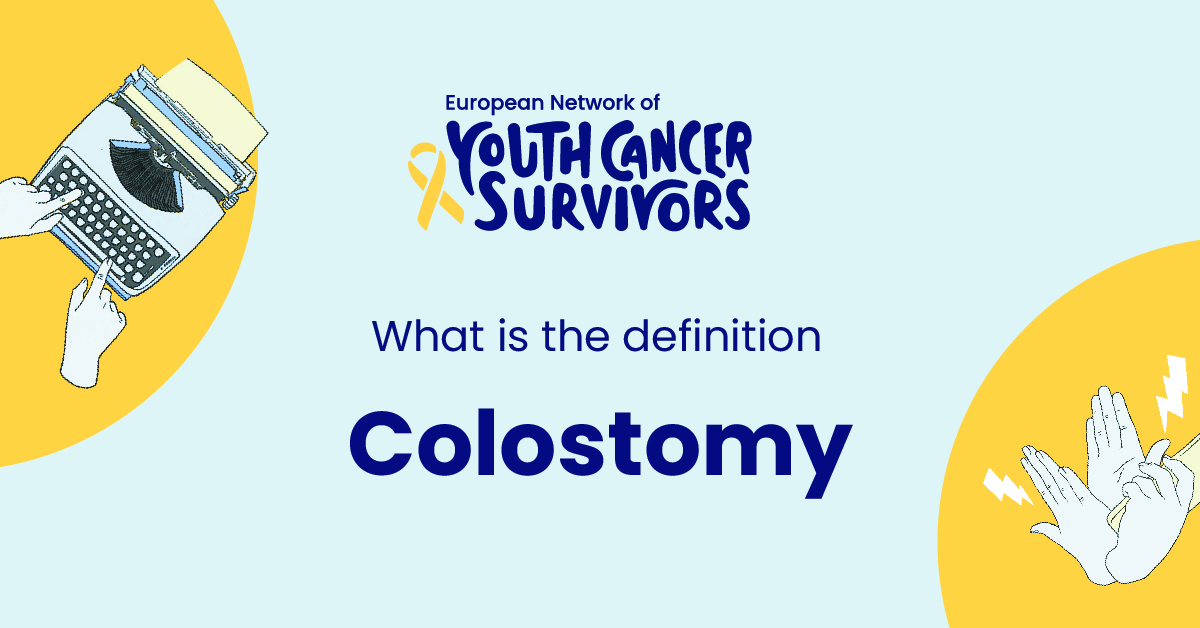
Facing a colostomy can be daunting. The thoughts of living with a stoma and managing a colostomy bag may seem overwhelming. However, understanding what a colostomy is, why it’s needed, and how it impacts daily life can provide comfort, facilitate acceptance and foster resilience. This comprehensive overview aims to demystify colostomy, address common concerns, and provide reassurance for individuals embarking on this life-altering journey.
Understanding Colostomy: Definition and Brief Explanation
Firstly, a colostomy refers to a surgical procedure that creates an alternative pathway for waste elimination from the body. This is accomplished by forming a stoma, a surgically created opening on the abdomen, which connects to the colon. The opening allows waste to exit the body into an externally attached bag.
There are three primary types of colostomies, each with a distinct surgical technique and intended purpose:
- An End colostomy is often permanent, usually performed when a part of the colon or rectum is removed due to a disease such as colorectal cancer.
- In Loop colostomy, a loop of the colon is pulled out onto the abdomen. This is typically a temporary measure made to divert stool from a healing area lower in the colon.
- Differentiating from an End and Loop, a Double-Barrel colostomy brings out two ends of the colon as separate stomas and usually serves a temporary role.
The colostomy procedure largely involves general anesthesia, surgical incision on the abdomen, and formation of a stoma. The time to complete the surgery can vary from 1-4 hours depending on the complexity of the patient’s condition and the procedure type.
Why is a Colostomy Needed?
A colostomy becomes necessary due to various medical conditions that impede or prevent normal bowel functioning. These might include colon or rectum cancer, bowel obstruction, inflammatory bowel disease, diverticulitis, trauma, or congenital defects.
Whether a colostomy is temporary or permanent largely depends on the underlying condition that necessitates the surgery. A temporary colostomy serves a protective role, allowing the diseased or injured portion of the bowel to heal. Once healing is complete, the colostomy can be reversed in another operation. A permanent colostomy is required when the lower part of the colon or rectum has been removed and cannot be reconnected.
Life After a Colostomy: The Impact on Quality of Life
Anyone adjusting to life with a colostomy is bound to experience some changes. However, ample resources and support are available to manage these changes and ensure a continued good quality of life.
Daily care primarily involves managing and emptying the colostomy bag, as well as maintaining hygiene to prevent infection. With time, these tasks typically become routine.
Get to know us better
If you are reading this, you are in the right place – we do not care who you are and what you do, press the button and follow discussions live

Potential Complications and Risks of Colostomy
As with any surgery, colostomy has potential complications. In the short term, these could include surgical site infection or issues with the stoma, such as irritation, bleeding or a blockage. Long-term risks can include hernias, prolapse of the stoma, or skin problems around the stoma.
Conclusion: Understanding and Adapting to Life with a Colostomy
While an adjustment, life with a colostomy can still be rich and fulfilling. The key lies in understanding the procedure, knowing what to expect, and learning how to manage daily life post-surgery. Through education, resilience, and a supportive healthcare team, individuals with a colostomy can navigate this significant life change confident of maintaining their quality of life.
FAQs About Colostomy
- Can a person live a normal life after a Colostomy?
Yes, a person can live a regular life after a colostomy, which includes working, exercising, and participating in social activities.
- What changes in diet and lifestyle may come after a Colostomy?
Dietary adjustments largely depend on the individual and the state of their digestive system after the operation. Some people might need to follow a low-fiber diet initially with the gradual reintroduction of higher-fiber foods with time.
- How does a Colostomy affect physical activities like exercise or travel?
With some planning, exercise, and travel are possible and even encouraged. For exercise, a protective belt or an ostomy support garment can secure the colostomy bag. For travel, bringing extra supplies is usually sufficient.
- Is it possible to reverse a Colostomy?
Whether a colostomy can be reversed or not largely depends on the reason for the initial surgery. Temporary colostomies are often reversed once the underlying area has healed.
- How does a patient manage hygiene with a Colostomy pouch?
Maintaining stoma and skin hygiene typically involves regular cleaning of the stoma, skin, and equipment within a scheduled routine.

















Comments
Thank you. Comment sent for approval.
Something is wrong, try again later